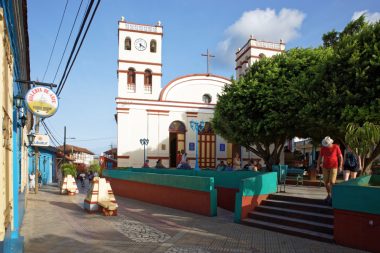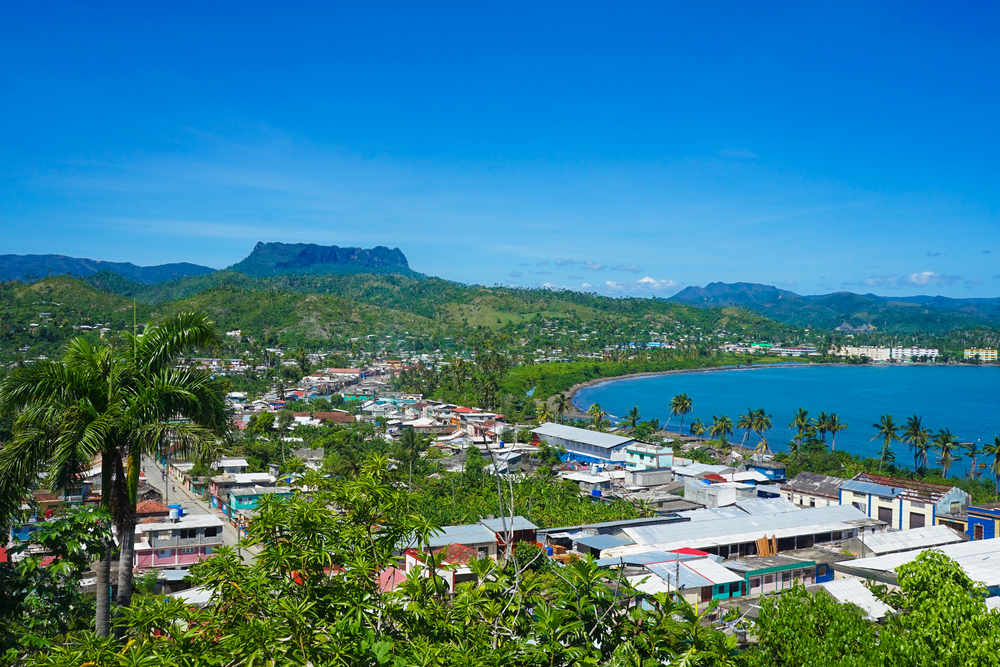Baracoa in eastern Cuba in the province of Guantánamo is the oldest settlement on the Caribbean island. The former capital of Cuba is located on the Atlantic coast, on the Bahía de Miel, the Bay of Honey. As early as 1492, Christopher Columbus discovered the remote place on one of his voyages. Surrounded by the mighty Sierra del Purial mountain range, the city, founded in 1511 by Governor Diego Velázquez, could only be reached by sea for a long time. It was not until 1965 under Fidel Castro that the breathtaking La Farola, a mountain road winding through the Sierra del Purial, was created.
Caribbean culture
Even after its connection to the rest of Cuba, the colonial village remained tranquil, far away from mass tourism. Cobblestones and colorfully painted houses give the city center of Baracoa its unique atmosphere. The pronounced French influence on the city’s design can be traced back to the French settlers who immigrated from Haiti in the 19th century and also introduced the cultivation of cocoa and coffee. In the historic old town, which has more French than Spanish influences, the Cathedral of Nuestra Señora de la Asunción rises up. The oldest church in Cuba preserves the Cruz de la Parra cross from the 15th century, which Columbus is said to have erected on his arrival. In front of the church stands a bust of tribal chief Hatuey.
Along the eastern coast of Baracoa runs the Malecón seafront. It ends at a park with a statue of the explorer Columbus. In front of the city stretches the beach Playa Negra, also called Playa Boca de Miel. Further west are the quiet beaches of Playa Maguana and Playa Nibujón.
Cuban Traditions

With the large number of cocoa plantations, it is not surprising that chocolate is a typical product of Baracoa. In the city, Cuba’s largest chocolate factory produces a wide variety of tempting products. At Casa del Chocolate, in addition to chocolate, you can also taste the specialty of the place, a sweet called cucurucho. The mixture of honey, sugar, fruit and coconut is traditionally served wrapped in a palm leaf.
The Cuban way of life, such as music and salsa, is best experienced at the Plaza de la Independencia in the heart of the city. On weekends, a colourful farmers’ market is held on the waterfront, where local farmers sell their regional products.
You can also learn interesting facts about the culture of the country, the history of the city and the indigenous people in the museum at the Fortaleza la Matachíne fortress. It was built by the Spanish colonial rulers to protect it from pirates. From the Castillo de Seboruco, the highest fort in Baracoa, you can enjoy magnificent views of Baracoa and the Bahía de Miel.
Original landscapes
Baracoa and its surroundings are characterized by unspoiled nature. On the coast of the Caribbean town, lonely white beaches beckon with turquoise blue waters, while the interior is dominated by dense tropical rainforest.
The Cuchillas del Toa Biosphere Reserve serves to protect the world’s last preserved rainforests and their endangered rare flora and fauna. Here you will find the Parque Nacional Alejandro de Humboldt, which is well worth seeing, named after the naturalist Alexander von Humboldt. It is the largest national park in Cuba and a UNESCO World Heritage Site. On fascinating hikes through the park, visitors discover rare plants and animals, including the Cuban land snail with its interesting color spirals.
In the Cuchillas del Toa mountain range, the 575-metre-high table mountain El Yunque, the anvil, also rises in the middle of the tropical rainforest. On its summit stands a bust of Christopher Columbus, and at the foot of the limestone cliff, cocoa and bananas thrive on the plantations. From the Salto Fino, the highest waterfall in the Caribbean, the water of the Arroyo del Infierno thunders from a height of 305 meters into the depths.
On the Rio de Yumurí River, you will find a tropical paradise and the small village of Boca de Yumuri, from which you can take boat trips to the nearby canyon.


